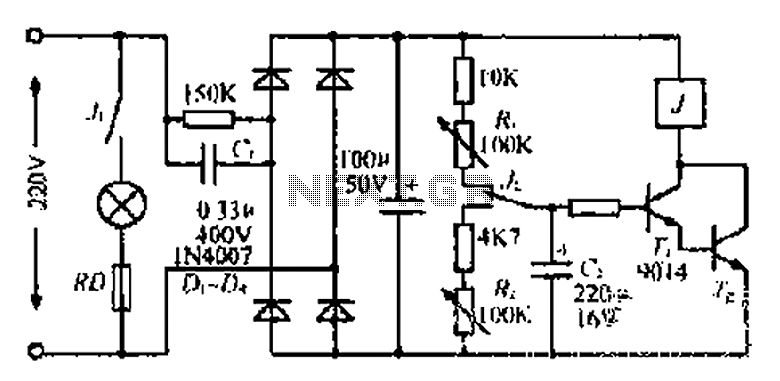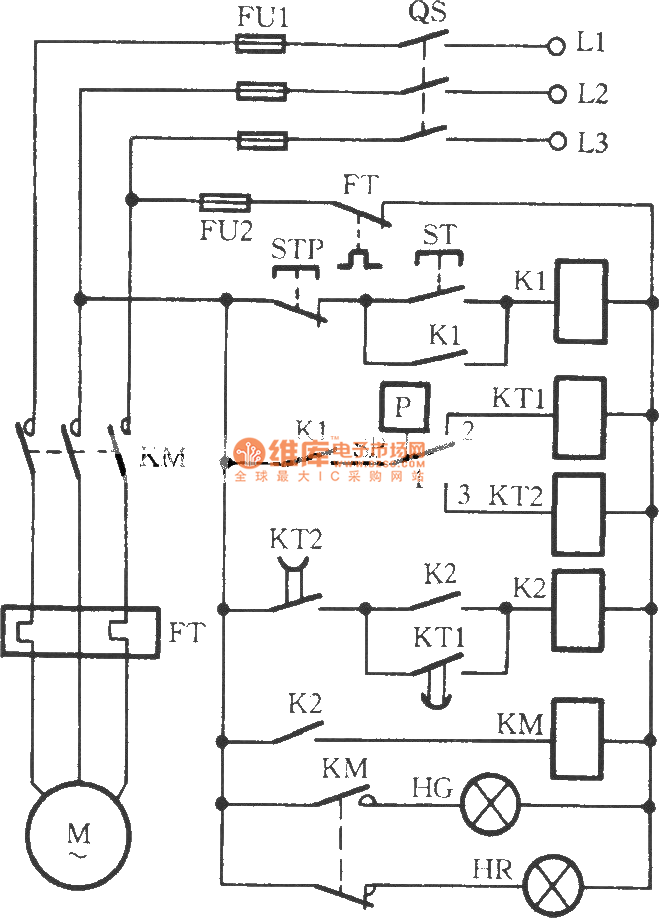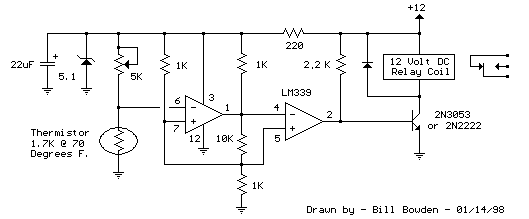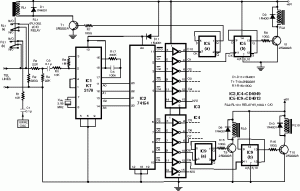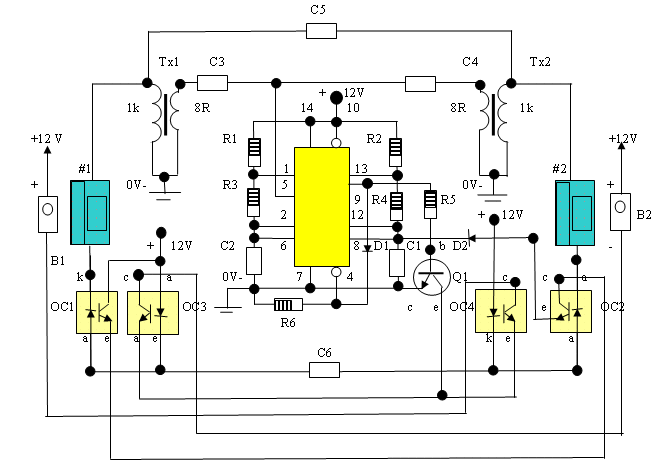
Telephone relay
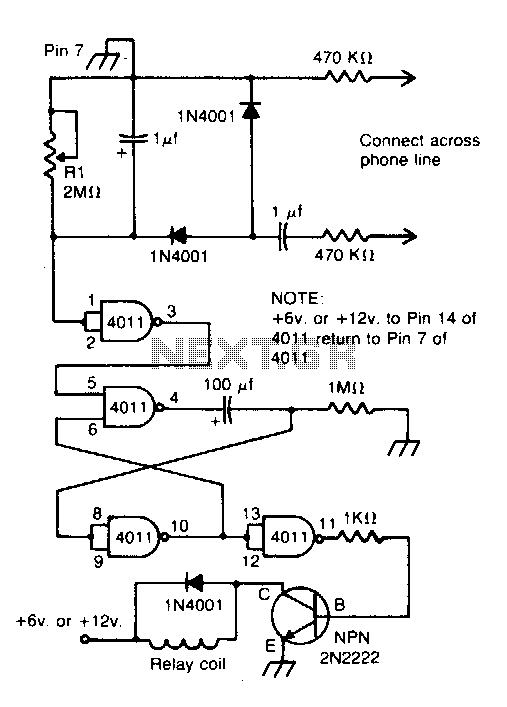
Connected across the bell circuit of a phone, this circuit activates a relay when the phone is ringing. It can utilize delay contacts to operate any bell, siren, buzzer, or lamp.
The described circuit functions as a relay activation mechanism that engages when a phone receives an incoming call. It is integrated across the bell circuit, which is the part of the phone responsible for ringing when a call is received. The primary component of this circuit is a relay, which serves as an electromechanical switch that can control a higher power device in response to a lower power signal.
When the phone rings, the bell circuit generates a voltage that is detected by the relay. This voltage energizes the relay coil, causing the relay contacts to close. The closing of the contacts can then be used to power various devices such as bells, sirens, buzzers, or lamps. The inclusion of delay contacts allows for the operation of these devices with a predetermined time delay, providing flexibility in the timing of the alert.
For schematic representation, the circuit typically includes a relay with a coil connected in parallel to the phone's bell circuit. The relay contacts can be configured as normally open (NO) or normally closed (NC), depending on the desired operation of the connected device. A diode may be added in parallel with the relay coil to prevent back EMF from damaging other circuit components when the relay is de-energized.
Overall, this circuit design is straightforward yet effective for enhancing alert systems associated with incoming phone calls, providing additional notification options beyond the standard ringing sound.Connected across the bell circuit of phone, this circuit closes a relay when the phone is ringing Use the delay contacts to actuate any bell, siren, buzzer or lamp.
The described circuit functions as a relay activation mechanism that engages when a phone receives an incoming call. It is integrated across the bell circuit, which is the part of the phone responsible for ringing when a call is received. The primary component of this circuit is a relay, which serves as an electromechanical switch that can control a higher power device in response to a lower power signal.
When the phone rings, the bell circuit generates a voltage that is detected by the relay. This voltage energizes the relay coil, causing the relay contacts to close. The closing of the contacts can then be used to power various devices such as bells, sirens, buzzers, or lamps. The inclusion of delay contacts allows for the operation of these devices with a predetermined time delay, providing flexibility in the timing of the alert.
For schematic representation, the circuit typically includes a relay with a coil connected in parallel to the phone's bell circuit. The relay contacts can be configured as normally open (NO) or normally closed (NC), depending on the desired operation of the connected device. A diode may be added in parallel with the relay coil to prevent back EMF from damaging other circuit components when the relay is de-energized.
Overall, this circuit design is straightforward yet effective for enhancing alert systems associated with incoming phone calls, providing additional notification options beyond the standard ringing sound.Connected across the bell circuit of phone, this circuit closes a relay when the phone is ringing Use the delay contacts to actuate any bell, siren, buzzer or lamp.
